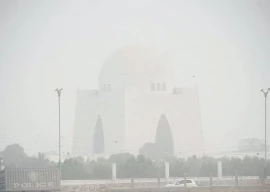
PESHAWAR: As the area lacks a significant number of industrial units and has limited or disorganised mining in some areas, economic activity in Fata is almost nil and there is little capacity to absorb skilled labourers.
Larger economic dependence remains on trade, both documented and undocumented. A large number of people also end up joining the armed forces to earn a living.
Only 8% of Fata’s entire landscape is cultivated. The area is around 1,000 square kilometres. Around 60% of the regional population lives below the poverty line.
Unemployment rates are 60-80%, varying from agency to agency, and depending on whose statistics are being cited. Just 62% of the tribal area population has access to electricity, but that does not necessarily mean availability. On average, the road density is 0.17 as compared to the national average of 0.26.
The irrigated area is 86,000 hectares and forests comprise 49,000 hectares.
The land supports an average of 18 people per cultivated hectare and around 40 people in irrigated areas. A total of 39% of the farmland is under irrigation and the rest relies solely on rainfall.
These are only official estimates which do not take into account the destruction caused by war and the troubles of families, some of whom were displaced and others which returned after a span of almost seven years.
This is not to say that there have not been any measures adopted by the government to come to terms with the problem. However, even a statistical glance is enough to conclude that a mammoth effort is required to address the issue.
Fata does not have a share in the National Finance Commission (NFC) Award because it is not a member of the commission. There is a strong case for the tribal areas that has been put forward to the federal government, but even the four provinces, which are part of the commission, have been fighting legal battles for their share.
In terms of development in the tribal areas, there is the Fata Sustainable Development Plan 2007-2015. The federal government sets aside a block allocation known as the Annual Development Programme (ADP). In addition, the Public Sector Development Programme (PSDP) provides separate funds for projects and contributes to donor assisted initiatives.
This is all done on an ad-hoc basis because no proper mechanism exists. Public representatives such as MNAs and senators are granted funds through the Khushal Pakistan Programme. However, that is more to please the lawmakers rather than people of their constituencies. The salaries of Fata Secretariat officials are a non-ADP component paid by the finance division.
The release of funds to the tribal areas is on a quarterly basis, while the Fata additional chief secretary is the accounts officer. The accounts are maintained by AGPR, Peshawar. Even the expenses of the political administration are based on a regular budget. What actually happens and how much money is made and the long tales of corruption are another story.
While all of this is good on paper, the year-wise growth of funds for Fata is less than the provinces. The tribal areas recorded a growth of only 4.8% as compared to the 21.7% for the provinces. These are figures based on official documents available from the last seven years.
Although it is a war-torn area, the documents show that there is a downward spiral in allocations for Fata and the area has been heading in the same direction over the years. In 2008-2009, 2.7% was given in the form of federal grants, but this fell to 2.6% in 2009-2010. The decline continued till it reached 2% in 2015.
Allocations for Fata have had a political tone of success to them as the war against militants had to be won in the area. The situation on paper presents a totally different picture when it comes to people of the area.
Peace and sustainability can only be a dream in the pipeline. If the post-war and long-term economic needs of the area are not taken seriously, it could spell trouble for the area.
Published in The Express Tribune, July 27th, 2016.

















































COMMENTS
Comments are moderated and generally will be posted if they are on-topic and not abusive.
For more information, please see our Comments FAQ